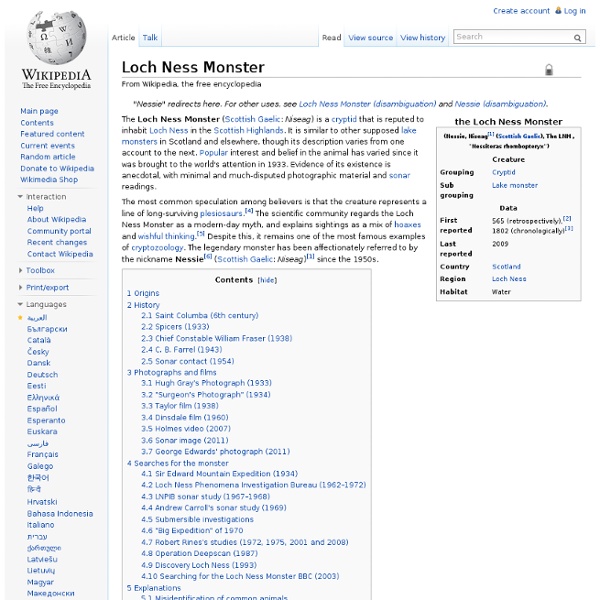Loch Ness and Loch Ness Monster Information. Facts about Nessie, Loch Ness Research and Exploration
Walkhighlands: Scotland walks and accommodation
Edinburgh Castle Review
The Castle on the Hill Edinburgh Castle is a very popular visitor site, as we learned from the extremely long line (the queue) of tourists waiting to purchase tickets to enter and tour this multi-centuries old fortress. On the day we went to tour the castle, it was overcast and rainy. The castle was dated back to at least the 12th century. The scepter dates back to 1494. The Sword of State was another gift to King James IV from Pope Julius II in 1507. The current crown dates back to 1540 when King James V had it refashioned as the previous crown was damaged. Edinburgh Castle Map Data Map data ©2016 Google Map Satellite Edinburgh Castle - Edinburgh Castle, Castlehill, Edinburgh, City of Edinburgh EH1 2NG [get directions] The Chapel The most notable part of the castle tour for us was the 12th century St. We heard that it is still used today by military officers for wedding ceremonies. The chapel itself has some very ornate stained glass windows, but it is quite small. Scot Pride Other Notable Items
Tantallon and Dirleton Castles Review
The Tales of Two Castles Both Tantallon and Dirleton Castles are in ruined state but you can tour them safely and completely. These are hands on walking tours so you will be able to actually see the castles both interior and exterior. They are also located near each other, so can be toured on the same day. We toured Tantallon first and even though it was a cloudy day, I was able to see the ruins of Dirleton Castle from the top floor of Tantallon. Tantallon Castle Note: visitors are allowed to walk through almost all of the remains. Tantallon castle overlooks the high cliffs of the Firth of Forth (a fjord - long narrow inlet). These Earls held onto the castle for the next three hundred years. Medieval Castle This medieval castle was built to withstand assaults from archer arrows and rock throwing trebuchets (a type of catapult). It was first built with red sandstone. Following the siege of 1598, the fortress was modified to allow for gun holes in the outer walls and postern gate area. Map
Loch Ness and Urquhart Castle Review
The Loch (Lake) Loch Ness is one of the most beautiful Lochs (Lakes) in Scotland. Although Scotland does have many Lochs, this one stands out for both beauty and legend. We had the opportunity to explore the Loch on a tour boat. For starters, NO, we did not see Nessie the Loch Ness Monster in the Loch. The local residents obviously did not want to let us go without seeing a Nessie. The Loch is 28.1 square miles of freshwater, with the deepest point being 755 ft. Important Loch History People like to try to set world records on the Loch. In 1966 a woman became the first person to swim the length of the Loch in 31 hours and 27 minutes. In 1974 a water skier became the first person to ski the length of the Loch. On a sad note in 1952 John Cobb, a well known British race car record holder, attempted to break the world water record for a jet speedboat. He died during this accident. Some people say that his jet speedboat was hit by a rogue wake during the turn, which caused it to flip over. Map
Balmoral and Eilean Donan Castles Review
The Queen's Hunting Lodge Balmoral Castle is not really a castle as far as a fortress is concerned. It is a hunting lodge. It is one of the British Monarch, Queen Elizabeth's, private residences. It is located in the Scottish Highlands near Aberdeen. The Castle and its 50,000 acre estate were purchased in 1848 by Queen Victoria. The royal family has been very good stewards of the property during their ownership. Prince Albert hunted in the local woods while Queen Victoria took long walks around the estate. The Castle Today Today, Queen Elizabeth and Prince Phillip own the Castle. Visitors to Balmoral can tour the estate between the months of April through the end of July. We also toured the gardens and grounds. The coach house surprised us with several antique carts and carriages on display in addition to the Balmoral Tartans. In all, we found Balmoral to be very well cared after and grand for a castle. Use two fingers to move the map Map Data Map data ©2016 Google Map Satellite Fun Fact
Glencoe and Culloden Scotland Review
The Massacre of Glencoe The Massacre of Glencoe took place on February 12th, 1692 at 5 am. This massacre is one of the worst atrocities carried out by the British Army against the Clans loyal to the Jacobites. In August of 1691, King William provided a pardon to the Highland Clans if they would swear an oath to him. Glencoe had three settlements and was the location of the Clan MacDonalds. Alasdair MacIain was the 12th Chief of the MacDonald Clan at Glencoe. Unsuspecting Victims MacIain returned home thinking he had satisfied the oath requirements. Campbell, a senior member of the Clan Campbell, created an alliance in London with the Master of Stair (Secretary of State). The MacDonalds had the reputation for stealing livestock and hiding them in the secret valley near their settlements. Captain Robert Campbell and 120 of his men arrived in Glencoe near the end of January 1692 and sought hospitality in the settlements. Murder Under Trust No one was ever charged for this massacre. Glencoe Map



